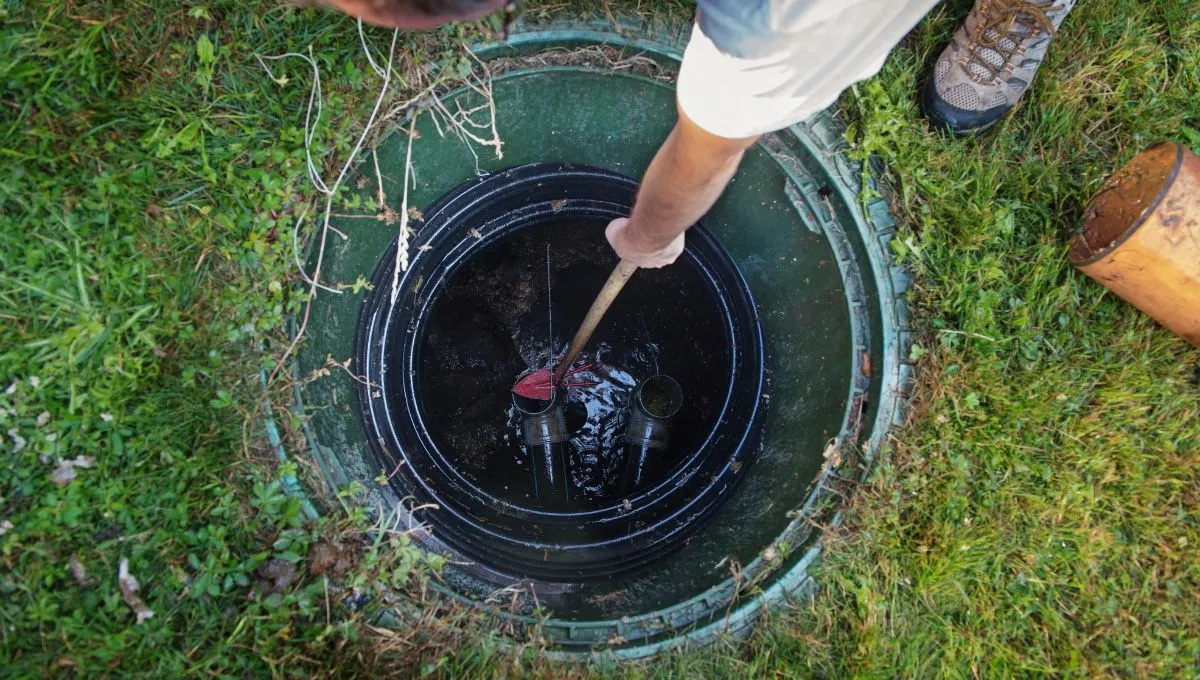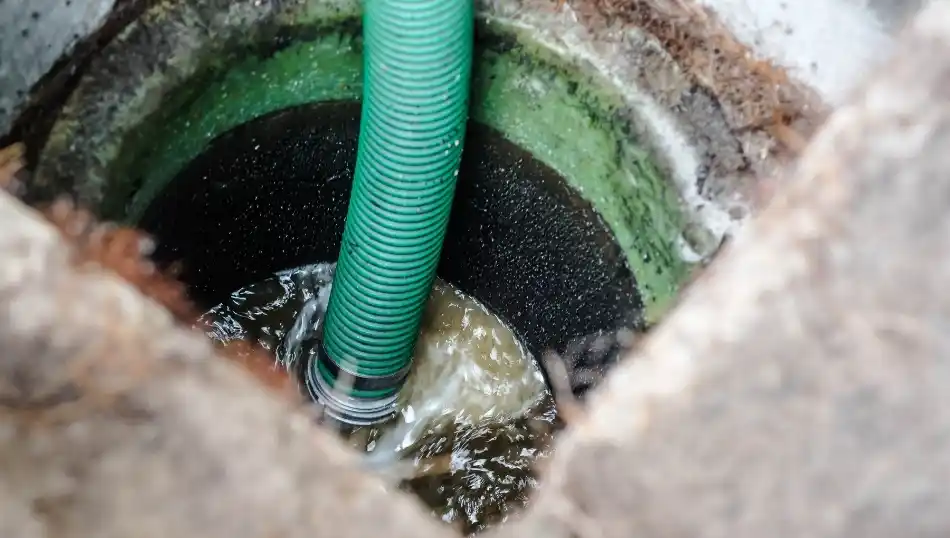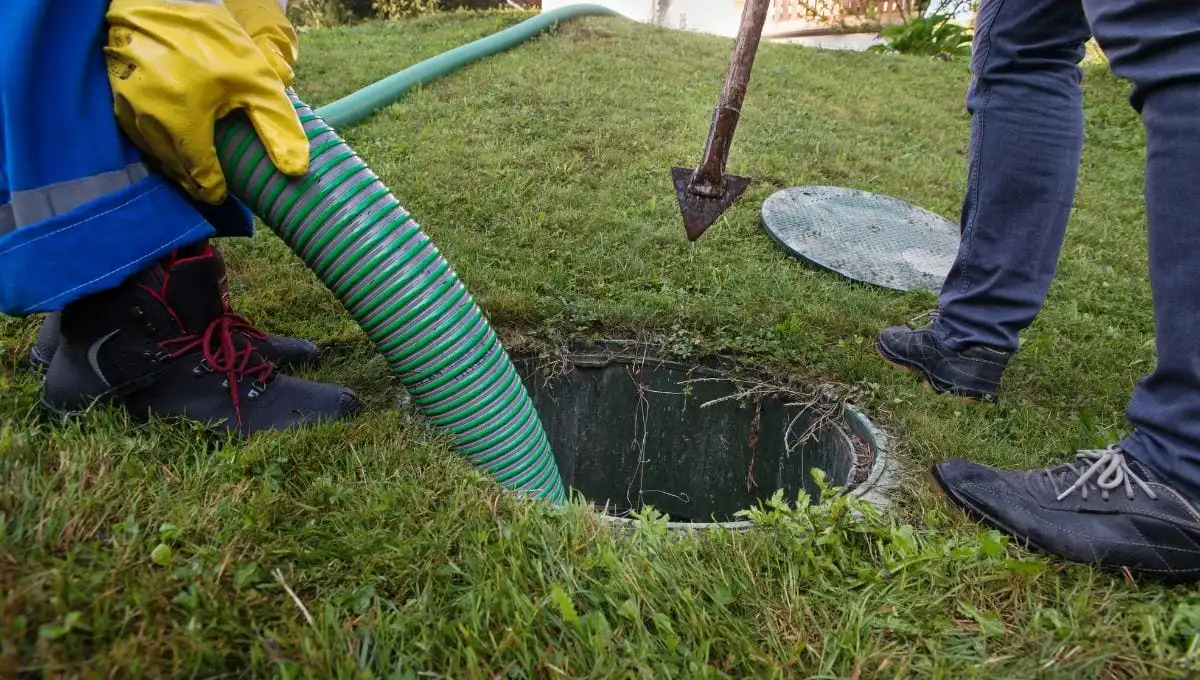
Owning a home is a rewarding experience, but it comes with its fair share of responsibilities. One crucial task that deserves your attention is septic tank maintenance. Think of it as a proactive way to protect your family’s health and the environment. With the right guidance, you can confidently tackle septic tank care and ensure it remains a simple, manageable part of your routine.
In this guide, we’ll cover everything from the importance of septic maintenance, warning signs of problems, and routine tips to professional services. Let’s explore the world of septic tank care so that you can contribute to the well-being of your home and surroundings.
Why Is Septic Tank Maintenance Important?
Septic systems are the unsung heroes of your home, working tirelessly to treat wastewater underground. But they need your help to function effectively. Here’s why regular maintenance is non-negotiable:
- Environmental Protection: A well-maintained septic system prevents harmful pollutants from seeping into groundwater, waterways, and the soil, ensuring a healthier environment for everyone.
- Cost Savings: Regular care prevents costly repairs and system failures. By addressing minor issues early on, you avoid expensive replacements or extensive damage to your property.
- Longevity: Proper maintenance significantly extends the lifespan of your septic system. By taking care of it now, you can avoid premature replacements and the associated costs.
- Property Value: A well-maintained septic system adds value to your property. It ensures a clean and safe environment, making your home more attractive to potential buyers.
Learn more about septic tanks in our comprehensive guide “What is a septic tank?”
Warning Signs Your Septic System Needs Attention
Don’t ignore these red flags that could signal trouble brewing in your septic system:
- Sluggish Drains: If multiple drains in your home are draining slowly, it could indicate a clog or backup in the septic system.
- Gurgling Pipes: Unusual gurgling sounds, especially after flushing the toilet, could signal a blockage or an issue with the vent pipe.
- Foul Odours: Unpleasant smells near your septic tank or drain field are a telltale sign of a problem that requires attention.
- Pooling Water or Lush Grass: Water pooling near the septic tank or unusually lush grass over the drain field could indicate a leak or overflow.
If you notice any of these signs, don’t delay! Act promptly to prevent further damage and ensure your septic system continues to function properly
Common Septic Tanks Issues
Installing septic systems is more than just a task; if improperly maintained and cared for, they can develop issues that may outweigh their advantages. Understanding these common problems empowers you to address them proactively:
- Overfilled Tank: Excessive water usage, infrequent pumping, or a high water table can lead to an overfilled tank, causing backups and overflows.
- Excessive Sludge and Scum Buildup: Over time, solids settle in the tank, forming sludge at the bottom and scum at the top. This formation reduces the tank’s capacity and can lead to clogs. Regular pumping (every 3-5 years) is essential to remove this buildup.
- Toxic Chemicals: Harsh chemicals like drain cleaners, bleach, and paint thinners can kill beneficial bacteria in the tank and disrupt the wastewater treatment process. Opt for septic-safe products instead.
- Clogs and Blockages: Flushing non-biodegradable items like sanitary napkins, paper towels, or grease can clog pipes and the drain field. Always dispose of these items properly.
- Tree Root Intrusion: Tree roots seeking moisture can infiltrate and damage pipes, causing leaks and blockages. Be mindful of planting trees and shrubs near the septic system.
- Damaged Tank or Drain Field: Heavy vehicles driving over the system or ground settling can damage the tank or drain field, leading to leaks, inefficient treatment, and environmental contamination.

Routine Septic Tank Maintenance Tips
Proper maintenance of the septic tank ensures its functionality and durability. While random checks and maintenance are necessary, following structured septic maintenance schedules is crucial. Follow these expert tips to keep your septic system in tip-top shape:
- Regular Inspections: Schedule professional inspections every 1-2 years. An expert can assess the condition of your tank, check for leaks, and ensure all components are functioning correctly.
- Timely Pumping: Pump your septic tank every 3-5 years to remove accumulated sludge and scum. A professional can determine the ideal pumping frequency based on household size, water usage, and tank size.
- Nurture Beneficial Bacteria: The bacteria in your tank are essential for breaking down waste. Avoid harsh chemicals and use septic-safe bacteria additives to maintain a healthy bacterial environment.
- Conserve Water: Use water efficiently to reduce the strain on your septic system. Fix leaks, install low-flow fixtures, and spread laundry loads to minimise water usage.
- Landscaping with Care: Choose plants with shallow root systems and avoid planting trees or shrubs near your septic system. Their roots can infiltrate and damage pipes.
Septic Tank Do’s and Don’ts: A Quick Guide
Proper septic tank maintenance is essential for its longevity and efficiency, helping to avoid expensive repairs and environmental risks. Here are some basic guidelines to follow:
Do’s:
- ✅ Schedule regular inspections and pumping.
- ✅ Conserve water and manage waste responsibly.
- ✅ Mark and maintain your drain field.
- ✅ Use septic-safe bacteria additives, detergents, and cleaners.
- ✅ Create a maintenance checklist and stick to it.
- ✅ Clean Wastewater outlets.
- ✅ Dispose of Waste.
Don’ts:
- ❌ Don’t pour grease, oil, or food scraps down the drain.
- ❌ Don’t flush anything other than toilet paper.
- ❌ Don’t plant trees or shrubs near the septic tank or drain field.
- ❌ Don’t drive or park heavy vehicles over the system.
- ❌ Don’t use harsh chemicals like drain cleaners or bleach.
- ❌ Don’t dig in the area around the tank or the drain field.
- ❌ Don’t put food scraps down the sink.
- ❌ Don’t allow toxic chemicals to enter the system.
The Cost Of Septic Tank Maintenance
While the precise cost of septic tank maintenance can vary, it’s wise to budget for several key expenses:
- Regular Inspections: Routine inspections are crucial for identifying potential issues early on. Expect to pay around $150-$300 for a professional inspection every 1-2 years.
- Pumping: Pumping is necessary for septic tank maintenance to remove accumulated solids. Plan for pumping costs every 3-5 years, typically from $300 to $800, depending on your tank size and local rates.
- Repair: If components of your septic system malfunction, repairs become necessary. Be prepared for potential repair costs, ranging from a few hundred dollars for minor issues to thousands for major repairs.
- Preventive Maintenance: Budget for septic-safe additives and consider the cost of system upgrades, which can save you money in the long run.
Remember, while septic tank maintenance involves expenses, it’s a worthwhile investment in your system’s longevity and efficiency. Regular care helps you avoid unexpected breakdowns and costly repairs, saving money and protecting the environment.
DIY or Professional Septic Tank Maintenance?
While some basic maintenance tasks, such as water conservation and septic-safe product usage, can be done yourself, leaving more complex functions like pumping and inspection to the professionals is crucial. Professionals have the experience, knowledge, and equipment to assess your system, identify potential issues, and perform maintenance safely and effectively.
The Challenges of DIY Septic Maintenance
- Physically Demanding: Maintaining a septic tank requires significant time, effort, and proper equipment. DIY efforts can be unbearable without the right knowledge and tools.
- Incomplete Cleaning: A complete septic tank cleaning is difficult without professional expertise. Partial maintenance can lead to solid buildup and system failures.
- Potential Damage: Improper handling can harm the tank and its components, leading to expensive repairs or system replacement.
- Health Hazards: Septic maintenance involves exposure to harmful bacteria and gases, which pose serious risks. Professionals are experts in handling these safely.
Professional Maintenance Benefits
- Expertise and Experience: Providers have extensive knowledge to identify and address issues an untrained person might miss.
- Quality Assurance: Professionals use specialised tools and techniques for thorough, effective maintenance.
- Safety Focus: They follow strict protocols to protect themselves and your property from septic system hazards.

Taylex: Your Trusted Partner for Septic Tank Solutions
At Taylex, we’re committed to providing expert solutions for all your septic tank needs. With over 50 years of experience in the industry, we offer a comprehensive range of services, including:
- Septic System Design and Installation
- Regular Maintenance and Inspections
- Pumping and Cleaning
- Repairs and Upgrades
Our team of skilled professionals ensures your septic system operates at peak efficiency. Contact us today for reliable, efficient, and environmentally friendly septic solutions.
Ready to take the next step in caring for your septic system? Contact Taylex today for a free consultation and expert advice
Septic Tank Maintenance FAQS
How Often Do Septic Tanks Need To Be Pumped Out?
Septic tanks typically need to be pumped out every 2-5 years. This frequency ensures that solids and sludge do not build up excessively, which could lead to clogs and system failures.
Do Septic Tanks Need To Be Emptied?
Yes! We must empty the septic tanks regularly to remove collected solids and sludge. It is essential for maintaining the septic system’s proper functioning.
What Time Of Year Is Best To Empty A Septic Tank?
Spring and early autumn are the best seasons for septic tank pumping. Spring allows for easier access with thawed ground, and helps manage water levels from rain and snowmelt. Early fall is also advantageous, especially before increased holiday usage
What Destroys A Septic Tank?
A septic tank can be destroyed by:
- Non-biodegradable items like cigarette butts, wipes, diapers, and paper towels
- Harmful substances such as nail polish, paint, glue, and motor oil
- Corrosive or acidic chemicals in some cleaning products
How To Clean A Septic Tank Naturally?
Avoid harsh chemicals that disrupt the tank’s bacterial balance. Use septic-safe additives to encourage beneficial microbes. Regularly flush with water and use natural cleaners like vinegar or baking soda. For thorough cleaning, consult a professional septic service provider.
What To Put In A Septic Tank To Break Down Solids?
Use septic-safe additives or bacteria supplements to break down solids. Enzymatic treatments target specific waste. Regular pumping and maintenance prevent buildup.
What Are The Signs That Your Septic Tank Is Full?
Slow drains, gurgling, odours, backups, and lush grass indicate a full tank. Schedule professional inspection and pumping.